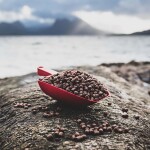Northern Ireland recently launched a new seafood trail that's taking a fresh approach to increasing local seafood consumption.
The trail precisely targets a local audience, and publicizes a variety of independent seafood shacks and restaurants, heritage centers, and family-friendly activities along the way. Colorful maps guide people along their chosen trail, with each stop color-coded to showcase nature, food, fishmongers, activities, and fishing industry landmarks. Each trail highlights a different species and contains information on the type of fishing gear used to catch it, and a simple recipe to try at home.
“The disruption caused by the COVID-19 pandemic severely impacted the export and food service markets, which are the main markets for Northern Ireland’s seafood. This led to a surge in interest in promoting the domestic market, with fishermen diversifying into direct sales and seafood businesses exploring home deliveries,” Seafish Regional Manager of Northern Ireland Sally Chamberlain told SeafoodSource. “It was against this background that the Seafood Trails were conceived, as a way to connect families with local seafood and the harbours, boats and communities behind it, as well as driving consumption, enhancing the local market and helping the industry to thrive.”
Northern Ireland has a relatively low per capita rate of seafood consumption. The U.K. government recommends its citizens eat at least two portions of fish per week, including one of oil-rich fish. However, according to Seafish, only 31 percent of U.K. consumers eat fish twice a week, and this rate is even lower in Northern Ireland.
Landings into Northern Ireland’s 35 ports – the majority of which support a handful of small inshore fishing vessels – was just over 19,000 metric tons (MT) in 2019, valued at GBP 37 million (USD 46.4 million, EUR 43.2 million). In 2020 and 2021 landings were significantly reduced.
Nephrops are the dominant species accounting for 43 percent of landings by weight and 58 percent by value, followed by crab, haddock, and herring by weight; and scallops by value. Most of the catch is exported, while local diets tend to feature imported seafood.
Imports in 2019 – mainly of nephrops, warm-water shrimp, and prawns – amounted to 395,540 MT, worth GBP 1.2 million (USD 1.5 million, EUR 1.4 million) while exports of nephrops, salmon, crab, mackerel, cod, horse mackerel, blue whiting, and molluscs weighed in at 815,567 MT worth GBP 2.2 million (USD 2.8 million, EUR 2.6 million).
“The Northern Ireland Seafood Trails provide a great platform to celebrate the variety of seafood that Northern Ireland has to offer," Anglo-North Irish Fish Producers Organisation CEO Alan McCulla said. "By exploring the bustling fishing ports and harbour towns that feature on these trails, and learning about Northern Ireland’s rich fishing heritage along the way, families will be encouraged to eat more locally sourced, sustainable and healthy seafood, and through this, help our vital seafood industry to thrive."
Photo courtesy of Mowi







